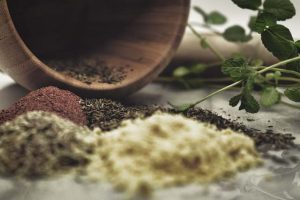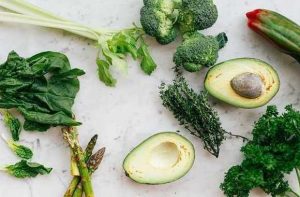What Does Walrus Taste Like? Exploring the Flavors of this Arctic Delicacy

Are you curious about what walrus meat tastes like? Although not commonly found on restaurant menus, walrus meat has been a significant part of the traditional diet of indigenous communities in the Arctic region for centuries.
In this article, we will delve into the taste, culinary applications, and nutritional advantages of walrus meat.
Who Eats Walrus Meat?
Walrus meat is a staple food of indigenous communities in the Arctic regions of Alaska, Canada, Greenland, and Russia.
These communities have relied on walrus meat for thousands of years as a source of protein, fat, and nutrients.
What is Walrus Meat?
Walrus meat comes from the blubber layer beneath the skin of the animal. The most common way to prepare walrus meat is by boiling, stewing, or roasting it.
The meat has a dark red color and a rich flavor that is often compared to beef or gamey meat.
When is Walrus Meat Consumed?
Walrus meat is traditionally consumed during the fall and winter months when hunting is allowed.
In addition to being a source of nutrition, walrus meat plays a significant cultural role in indigenous communities and is often shared at feasts and celebrations.
What Does Walrus Taste Like?
Walrus meat is not a commonly consumed food in most parts of the world, so there is limited information available regarding its taste.
However, it is generally described as having a strong and gamey flavor, similar to other marine mammals like seal or whale.
The taste can vary depending on factors such as the walrus’s diet, age, and the specific cooking method used.
Some people compare the taste of walrus meat to beef, while others say it has a fishier or brinier undertone.
Keep in mind that due to conservation efforts and cultural practices, consuming walrus meat is restricted in many regions, so it’s not readily available for regular consumption.
The taste of walrus meat is often described as strong and gamey. The meat itself is known for being quite dense and fatty, which contributes to its distinct flavor.
The diet of the walrus, primarily consisting of shellfish and other marine organisms, can also influence its taste.
When cooked, walrus meat is often prepared by traditional methods such as boiling, roasting, or smoking.
These methods help tenderize the meat and enhance its flavors. Due to its high fat content, walrus meat can be rich and succulent, similar to some cuts of beef.
Some people compare it to a leaner version of pork or even veal. The texture of walrus meat can vary depending on the specific cut and cooking technique, ranging from tender to slightly chewy.
It’s important to note that walruses are protected species in many regions and hunting them is highly regulated or prohibited.
Indigenous communities in certain areas may have legal rights to hunt walrus for subsistence purposes, as it is an important part of their traditional diet and cultural heritage.
However, for most people, experiencing the taste of walrus meat would be quite rare.
If you are interested in exploring unique flavors and regional cuisines, it’s always advisable to respect local laws and regulations regarding wildlife conservation and protection.
Read more:
How to Prepare Walrus Meat?
Walrus meat requires special preparation due to its tough texture and strong flavor. The meat is typically soaked in saltwater or milk to tenderize and remove any gamey taste.
Once prepared, it can be boiled, roasted, or stewed and served with vegetables and grains.
Some traditional recipes also use the organs and blubber of the walrus in soups and stews.
Pros and Cons of Eating Walrus Meat
Pros:
- High in protein: Walrus meat is an excellent source of protein, containing more than 30 grams per serving.
- Nutrient-dense: Walrus meat is high in vitamins and minerals, including iron, vitamin B12, and omega-3 fatty acids.
- Sustainable: Walrus hunting is regulated by indigenous communities to ensure the sustainability of the population.
Cons:
- Strong flavor: Some people find the gamey taste of walrus meat too strong for their liking.
- Limited availability: Walrus meat is not commonly found in grocery stores or restaurants outside of the Arctic region.
- High in fat: The blubber layer of walrus meat contains high levels of fat and cholesterol, which may not be suitable for individuals on a low-fat diet.
Alternatives to Walrus Meat
If you’re interested in trying a unique and sustainable protein source but don’t have access to walrus meat, there are other alternatives to consider, such as:
- Reindeer meat: A traditional food in Scandinavian and Russian cuisine, reindeer meat has a similar rich flavor to walrus meat and is often served in stews and soups.
- Bison meat: Bison meat is a lean protein source that can be substituted for beef in many recipes.
- Elk meat: Elk meat is another gamey meat that is similar in flavor to walrus and is commonly used in stews, burgers, and sausages.
Tips for Cooking with Walrus Meat
- Soak the meat in saltwater or milk overnight before cooking to tenderize and remove any gamey taste.
- Cook slowly over low heat to ensure the meat becomes tender and flavorful.
- Season liberally with herbs and spices to enhance the flavor of the meat.
The Best Walrus Meat Recipe
One popular recipe for preparing walrus meat is Walrus Stew. Here is a step-by-step guide to making this delicious and hearty dish:
Ingredients:
- 2 pounds of walrus meat, trimmed and cut into bite-sized pieces
- 4 cups of water
- 1 onion, diced
- 2 carrots, peeled and chopped
- 2 celery stalks, chopped
- 2 potatoes, peeled and diced
- Salt and pepper to taste
Instructions:
- Soak the walrus meat in saltwater or milk overnight to tenderize.
- In a large pot, bring the water to a boil.
- Add the walrus meat, onion, carrots, and celery to the pot.
- Reduce heat and simmer for 1 hour.
- Add potatoes and continue to simmer for an additional 30 minutes or until the vegetables are tender.
- Season with salt and pepper to taste.
Conclusion
Walrus meat is a unique and flavorful protein source that has been a staple of indigenous diets for centuries.
Although not commonly found outside of the Arctic region, it can be a sustainable and nutritious addition to your diet if prepared and cooked correctly.
Before trying it, it’s essential to consider the pros and cons, as well as alternative options for gamey meat.
FAQs
- Is it legal to eat walrus meat? Yes, walrus hunting andconsumption are legal in indigenous communities in the Arctic region where they have traditional hunting rights.
- Can I find walrus meat in grocery stores or restaurants? Walrus meat is not commonly found in grocery stores or restaurants outside of the Arctic region, as it is primarily consumed by indigenous communities for cultural and subsistence purposes.
- Is walrus meat safe to eat? Walrus meat is safe to consume if properly prepared and cooked. However, it’s important to ensure that the meat has been hunted and handled safely to avoid any risks of contamination.
- How does walrus meat compare to other game meats like elk or bison? Walrus meat has a distinct flavor that is often compared to beef or gamey meat. It is high in protein, nutrients, and fat, and can be substituted with other game meats like elk or bison if walrus meat is not available.
- What are some traditional ways to prepare walrus meat? Some traditional methods of preparing walrus meat include boiling, roasting, or stewing. The meat is often served with vegetables and grains and can be used in soups and stews that also incorporate the organs and blubber of the animal.





